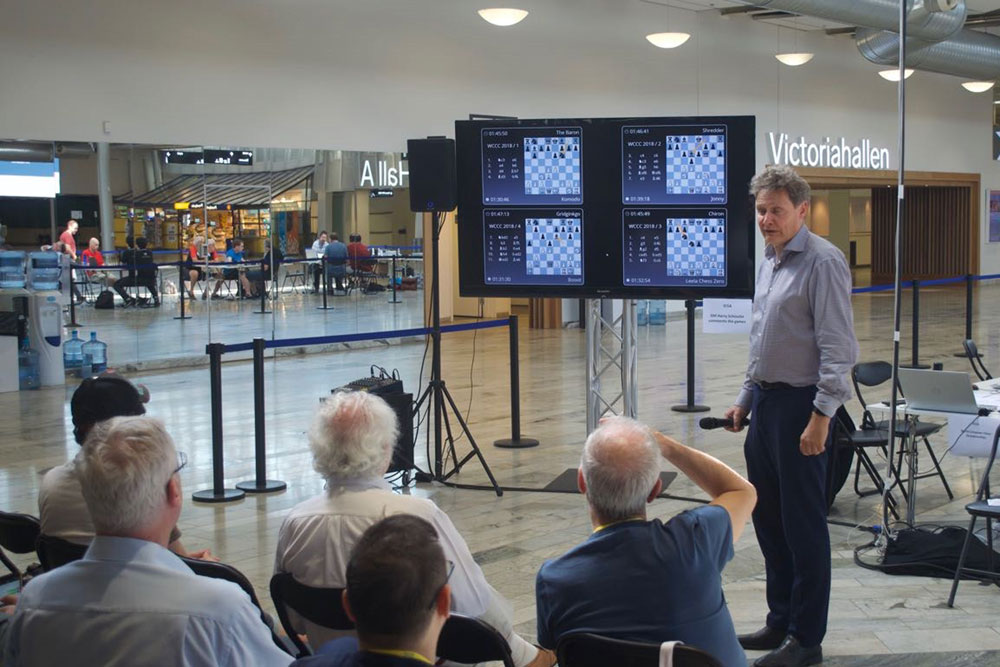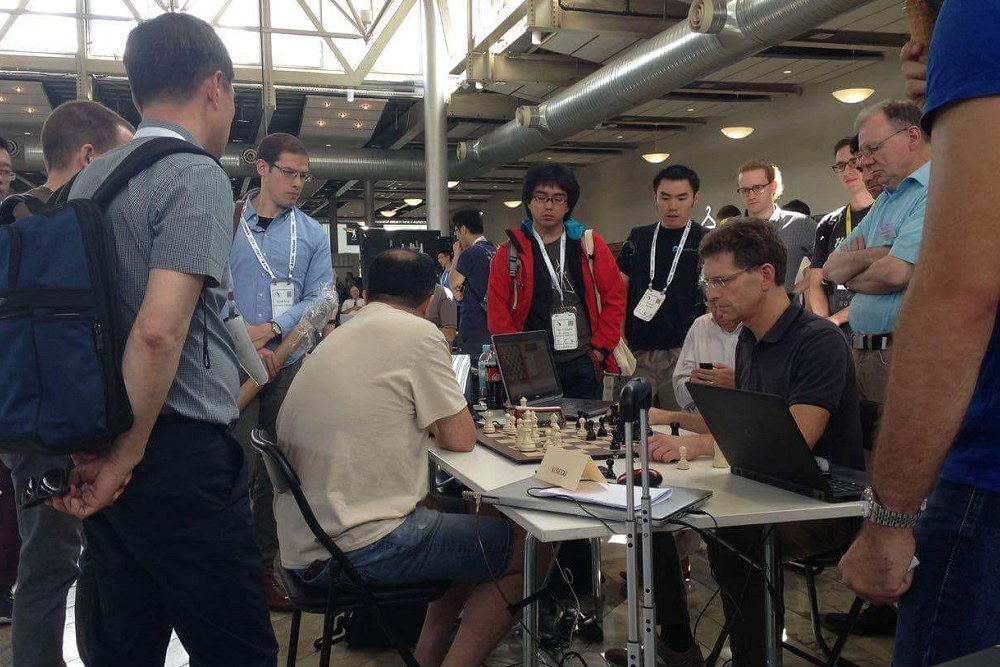


Endgame Turbo 5 USB flash drive
Perfect endgame analysis and a huge increase in engine performance: Get it with the new Endgame Turbo 5! This brings the full 6-piece Syzygy endgame tablebases on a pendrive. Just plug it in a USB socket and you are set!
What a cultural clash! The scene was a trade fair in Stockholm were some of the best chess computers were battling it out for the world championship. I was there commenting on the games. The only problem: I don't know much about computer chess. When I retired as a professional chess player more than 25 Years ago computers were not widely used. ChessBase had just hit the world, and Karpov & Kasparov were still much better than any silicon player.
My lack of computer knowledge revealed itself when some of the spectators asked some very intriguing questions. Unfortunately for me the world championship was held in conjunction with an AI conference. Some 7,000 researchers from around the globe discussed the future of Articifial Intelligence. It was a suitable environment for the chess super machines., but I got a lot of questions from the well-informed spectators, and could only answer a few.
More or less everytime I entered the playing hall and approached the boards I whispered, as is the habit during a chess tournament. What a mistake. Of course, the machines are not disturbed by voices. If they are fed with a suitable dose of electricity they are more than satisfied.

Operators with their programs during the competition | Photo: ICGA.org
You may expect human chess players to be totally absent from a tournament like this. Not so. On each board, there are two players in action — just like in a traditional tournament. These players are called ”operators”. You might assume the computers move the pieces on the board all by themselves. However, they don't. They have highly developed brains — but no arms.
Each of them needs an operator to read their choice of move on the screen and transform it into a piece movement on the board. The operator has to be alert. Just look at what happened to the newcomer Leela Chess Zero. This program is a "Deep Learning program" and follows the footsteps of the Google product Alpha Zero. It is programmed with basic knowledge of chess rules and then improves by playing millions of chess games against itself. However, Leela is a beginner when it comes to tough competitive play, and for their operators, the scene is new as well.
Komodo knew that this position was a theoretical draw. The machine had access to a database that gave her the answer. When the operator of Leela offered a draw, Komodo could safely decline. But why play on? Black can hardly win, or can she? Well, the operator of Leela had probably been a bit slow in executing the moves. Therefore there was a difference between Leelas' own "internal" clock and the real physical clock next to the board. Leela trusted her digital clock and thought that she had plenty of time. But it is the clock operated by the representative that is the valid one. So Leela — which also seemed to have lacked a built-in security margin — did not understand that she was in time trouble, pondered too long, and lost on time!
My first reaction was that this was a highly unethical behaviour from the Komodo team. But people convinced me that the operator is part of the game and that this is an acceptable manner to take advantage of a weak spot.
The different standard of ethics was also shown in the following position.
In this blocked position it would have been normal to agree to a draw — for players of flesh and blood, that is. The silicon monsters continued to play on for more than 50 moves. They are programmed to continue trying to win if they estimate their position to be just an inch more favourable.
White first carefully avoided three times repetition and showed that there were a lot of squares to put his rooks. After about 30 moves White gave up the pawn on b6 for nothing. This time it was the 50 move drawing rule which had to be avoided. And then she once again continued to manoeuvre the pieces around, apparently without purpose.
It was tediously boring. Surprisingly enough the operators didn't seem to mind at all. I think they have a romantic, very allowing, attitude towards their machine. Everything the machine does is witty and amusing. Like a newfound love.
For me, it was most refreshing to follow "Pauline", created by a chess enthusiast from Boston who has worked with the project in his spare time for a few years.
Pauline was named after the programmer's mother and had some tactical abilities. So I think his mother can be pretty proud! Still, the apparatus was probably more than a thousand Elo points weaker than its rivals. The scene was set for a massacre.
The black position is in ruins. "Baron" executed the poor monarch in style with 24.Rf7+! Nxf7 25.Nxg6+ Ke8 26.Nf6 mate 1-0.
But Pauline was an exception that allows us humans to feel pretty strong. In general, the competitors at the World Championship were extremely forceful. And the most brutal of them all was Komodo, bearing the name of the Indonesian Komodo Dragon, a lizard that can grow up to three meters long and often kills its prey by attacking it at the throat.
Master Class Vol.8: Magnus Carlsen
Scarcely any world champion has managed to captivate chess lovers to the extent Carlsen has. The enormously talented Norwegian hasn't been systematically trained within the structures of a major chess-playing nation such as Russia, the Ukraine or China.
Komodo 12 — the computer version — won all the competitions in Stockholm (blitz, the software world championship where all engines run on the same hardware and the "absolute" championship where there are no limits on the machines' hardware).
Have human players anything to learn from these monsters or should we better try to avoid them? Of course we can learn a lot.
My guess is that Magnus Carlsen has studied these programs quite thoroughly. The machines often avoid theoretical main lines, just like the human World Champion. The winner, Komodo, tried to achieve strategically unbalanced situations, relying on its ability to evaluate positional factors and choose the right path in calm waters. To name it after a lizard was perhaps not entirely fitting. Rather, the resemblance to Carlsen was, in my view, striking.
Less advanced players than Carlsen can also learn a lot. Play against them! Don't be frustrated when they make ugly moves and still win. They play seemingly unaesthetic moves because these moves work. They find the exceptions to general rules. This can benefit the play of even strong players. Don't forget that a move like 1.e4 c5 2.Nf3 Nc6 3.d4 cxd4 4.Nxd4 e5 was considered awkward until Evgeny Sveshnikov and others opened our minds.
The top-level chess machines are the creative minds of today. Be inspired! Dare to take the step into the peculiar world of chess programs.